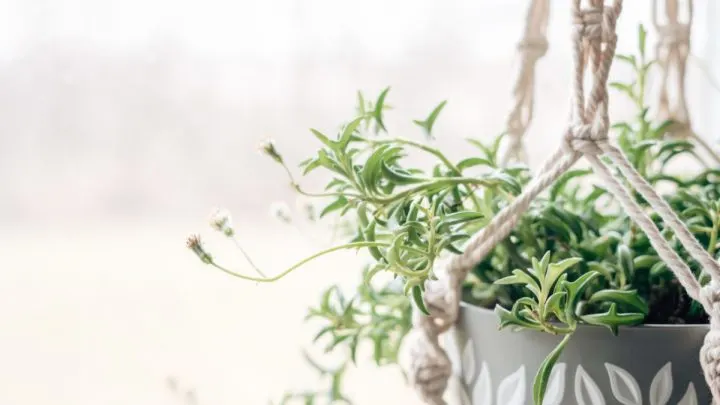In today’s article, we will discuss how to propagate string of dolphins (Senecio peregrinus). For all of you who already have this plant and plan to propagate it soon, this article will be ideal.
For others who have wanted to buy it for a long time, but think that its care is complicated, this article will be even more useful.
This plant is succulent so we can already conclude that this plant is much simpler than other plants.
In addition to the methods of propagation for this plant, you will also learn its ultimate care guide, which you will need for its further care during and after de-stemming, or from the beginning of purchasing strings of dolphins.
About Dolphins Plants
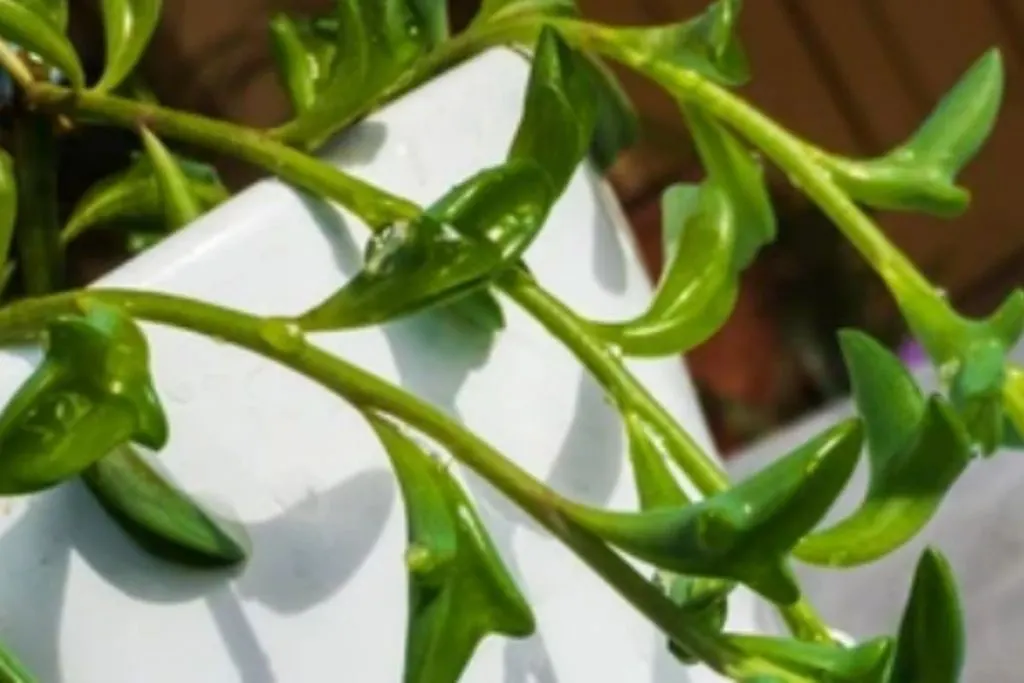
This adorable plant will give you beachy vibes all day because, true to its name, its leaves resemble pods of jumping dolphins!
A hybrid of a string of pearls and candle plant string of dolphins is a companion succulent in the Asteraceae family.
The dolphin series is characterized by iconic dolphin-shaped leaves and long hanging tendrils. Although they may bloom, the delicate flowers are relatively inconspicuous and these plants are grown for their interesting foliage rather than for flowers.
They look great in hanging baskets and vertical gardens or can be trained to grow upwards on a trellis or moss post, depending on what look you want.
A row of dolphins is most often grown indoors as a houseplant, although it can also be grown outdoors. However, they are not frost-resistant succulents and require warm weather year-round to survive outdoors.
Propagating Plants: String Of Dolphins Succulents
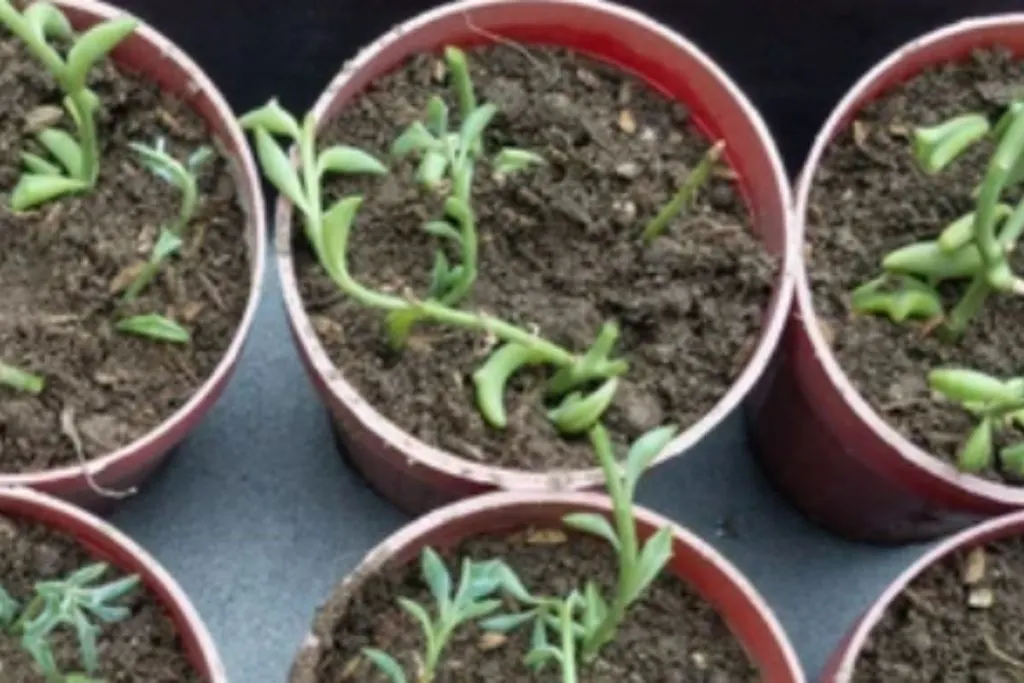
The propagating string of dolphins isn’t very complicated once you learn it. As with any other plant, when you go through their care guide carefully and then read it carefully, you’ll be a master of it.
This succulent plant is not a large succulent plant. Just as other similar plants has a couple of ways to get propagated. Stay with us and see what is the easiest way for you. All of them are surely effective and give good results.
We will go into detail below and you’ll learn all about it there.
Stem Cuttings Propagation Of String Of Dolphins
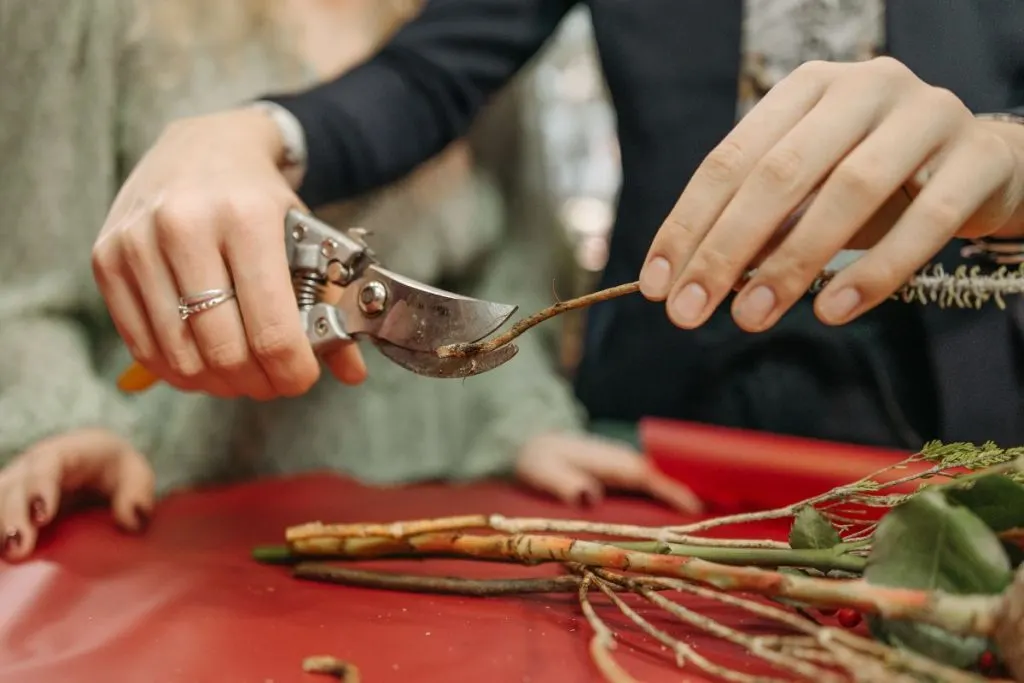
Take cuttings that have at least 2-3 nodes along the stem for the best chance of success. Nodes can be found where leaves emerge from stems and where new roots will grow.
Stem cuttings are one of the easiest ways of propagation your plants, This applies to all plants indoors, for a string of dolphins as well. No matter how you do it, with soil or water, it won’t take more than a couple of minutes of your time to do it.
Water Propagation Of String Of Dolphins
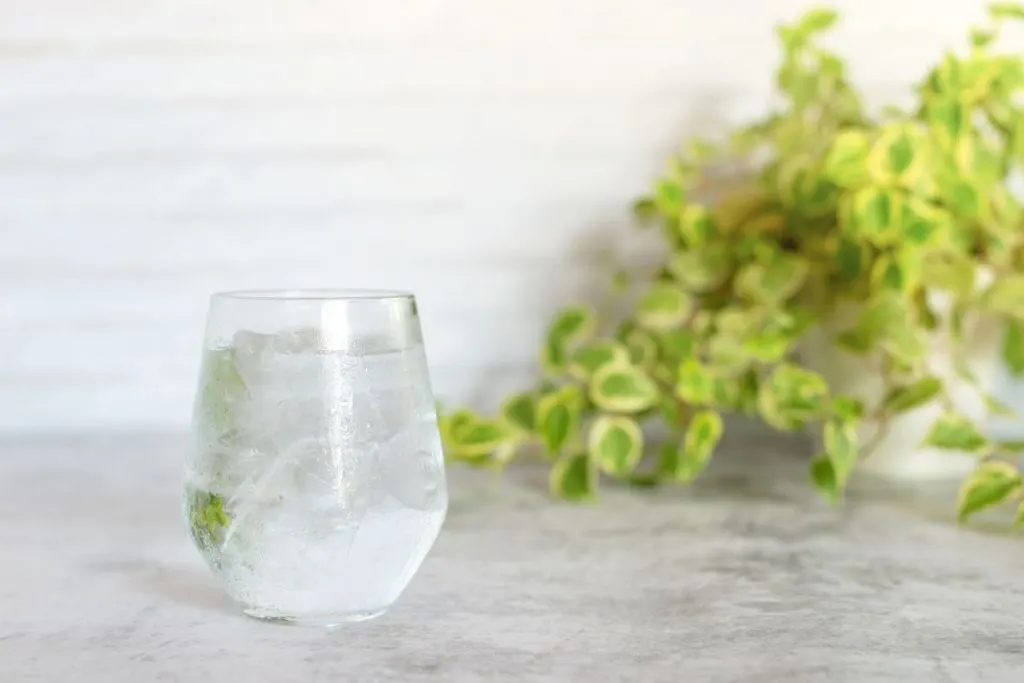
If you are propagating stem cuttings in water, remove the leaves from the bottom node or two to ensure the leaves do not rot.
Roots should develop within a few weeks, and then you can transfer the cutting to the ground.
If you are propagating in soil only, simply lay the stem cutting on top of the soil and keep the soil moist until the roots develop.
Can You Propagate String Of Dolphins From A Leaf Cuttings?
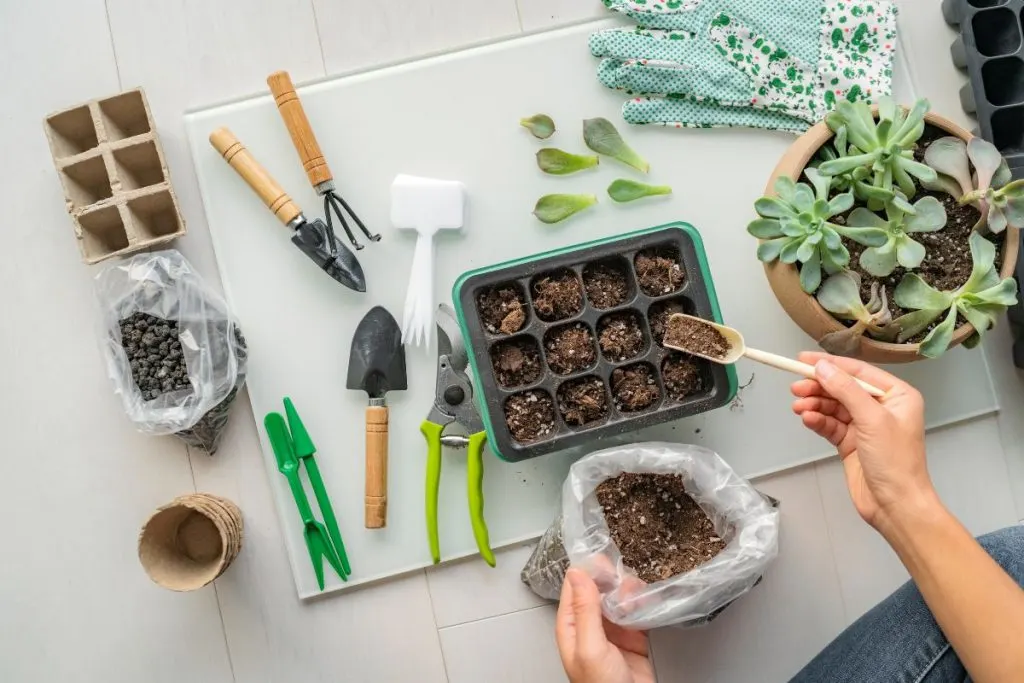
Yes, you can use the leaves to grow dolphin plants. Make sure the leaves come from healthy, mature plants.
As you can assume already, you cut a healthy leaf of this plant (sharp knife or scissors) and you put it into water.
Just as stem cuttings propagation, you’ll see progress for about a week, and voila, you’ve done it right! A new plant it’s on its way.
The question is how many plants in a flat? Let us help you to find out the right answer.
Caring For A Succulent Plant Dolphins Plant
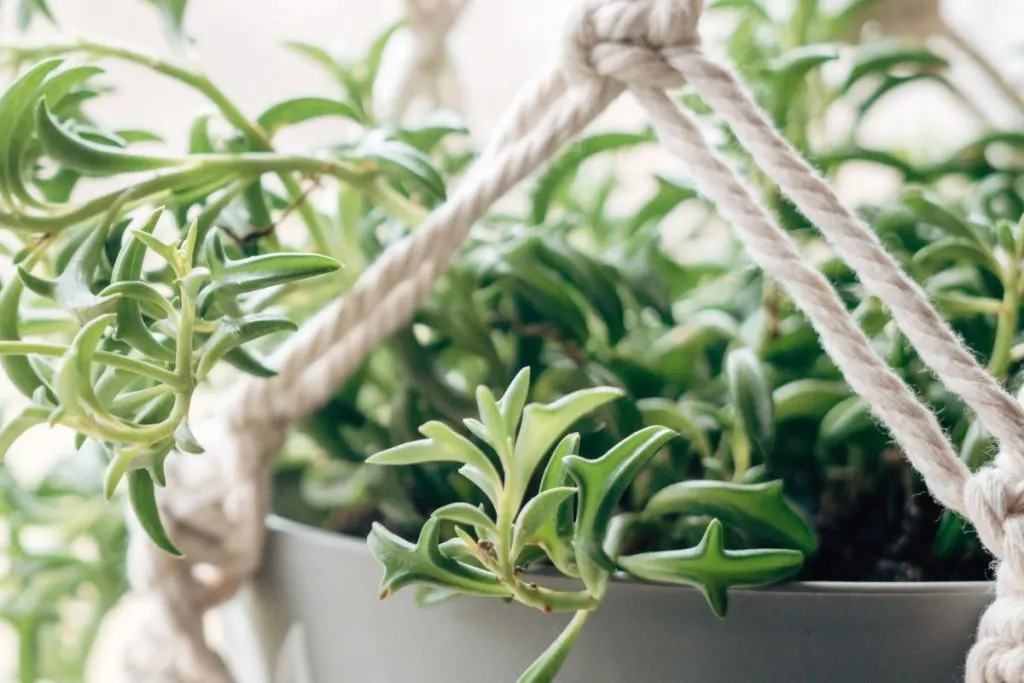
A row of dolphins is generally considered a low-maintenance succulent. Their plump leaves retain water making them drought tolerant and they don’t require any special care or maintenance to keep them happy.
They are also easy to propagate so just by owning one of these succulents you can easily share some with your friends.
Light Needs For Dolphins Plants
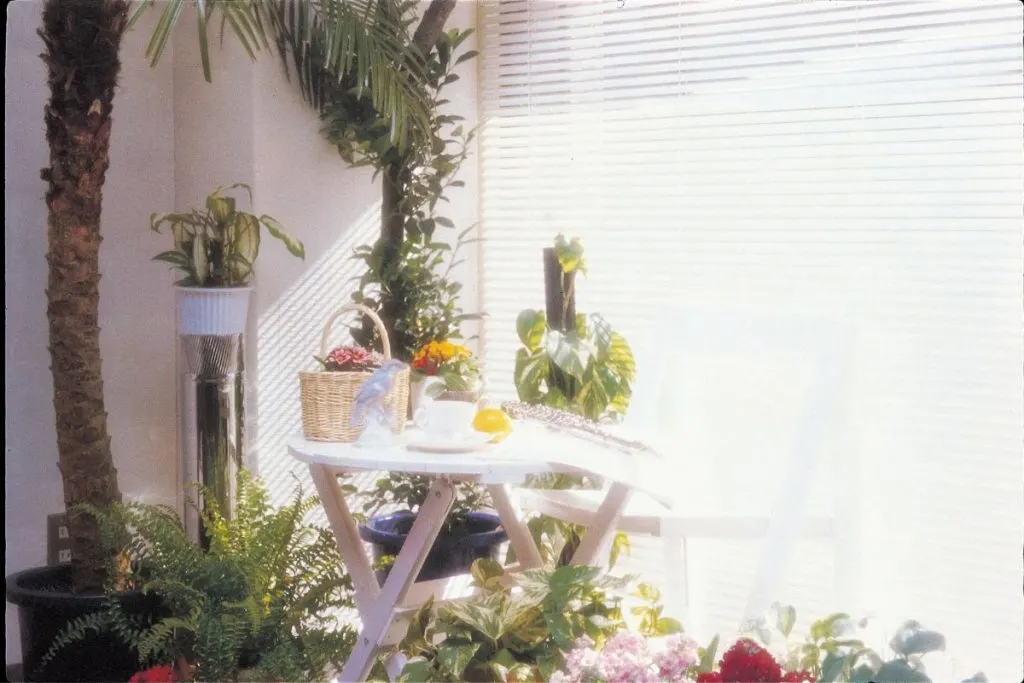
Dolphin row is not a bright light plant, and providing sufficient sunlight is imperative for healthy growth.
Put a row of dolphins in a bright, sunny window and ignore them most of the time and this adorable juice will do the trick.
Too much sunlight can kill your plant. You can tell your plant is having enough light when it’s growing healthily.
Although it can easily get sunburned in direct sunlight when grown outdoors, when grown as a houseplant, a dolphinarium does best if it receives at least six hours of sunlight per day.
A west-facing window is ideal, but medium-light can be adjusted when growing indoors. A south-facing window isn’t so bad either. If necessary, use grows lights to provide additional light. Indirect sunlight suits it the best.
Is Well Draining Soil A Right Choice?
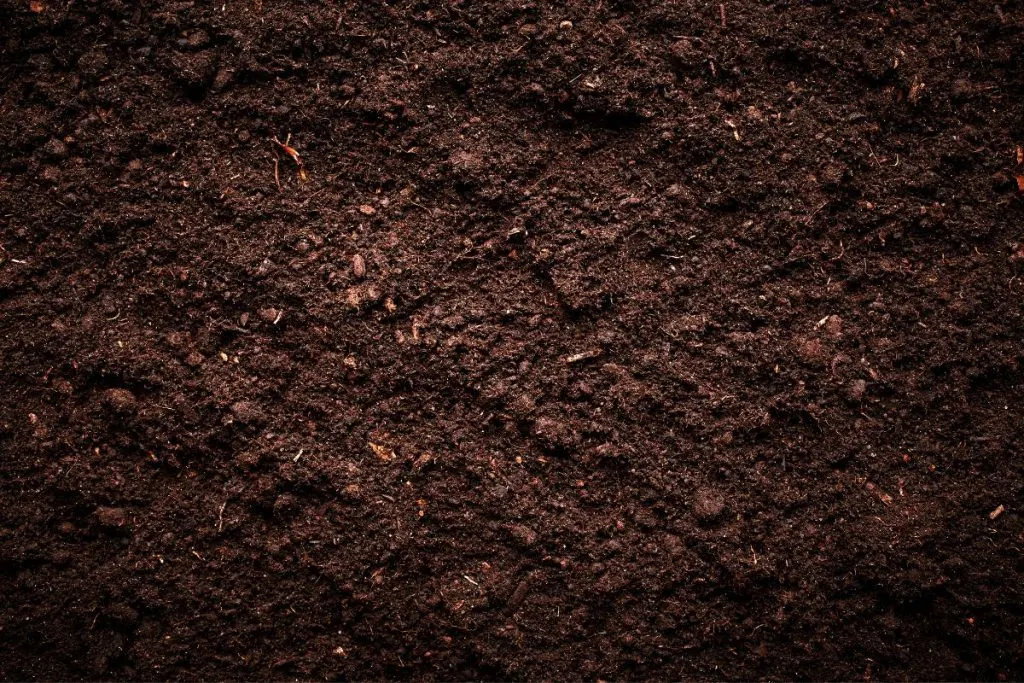
As with most succulents, dolphin string needs dry, well-drained soil. Commercially available cactus/succulent mixes are suitable for this plant, but you can also make your soil mix at home.
Simply combine 2 parts potting soil, 1 part pumice or perlite, and 1 part sand. Changing soil often isn’t a very good option.
Some people do it to replenish nutrients but it only creates a contra effect on the indoor plant. Let your mother plant grow in its original soil and you can do a soil change once it’s repotting time for these indoor plants.
Waterlogged soil isn’t such a smart idea unless you’re planning to go somewhere right after you repot them or buy them.
Water Needs For Succulent Plants Of Dolphins
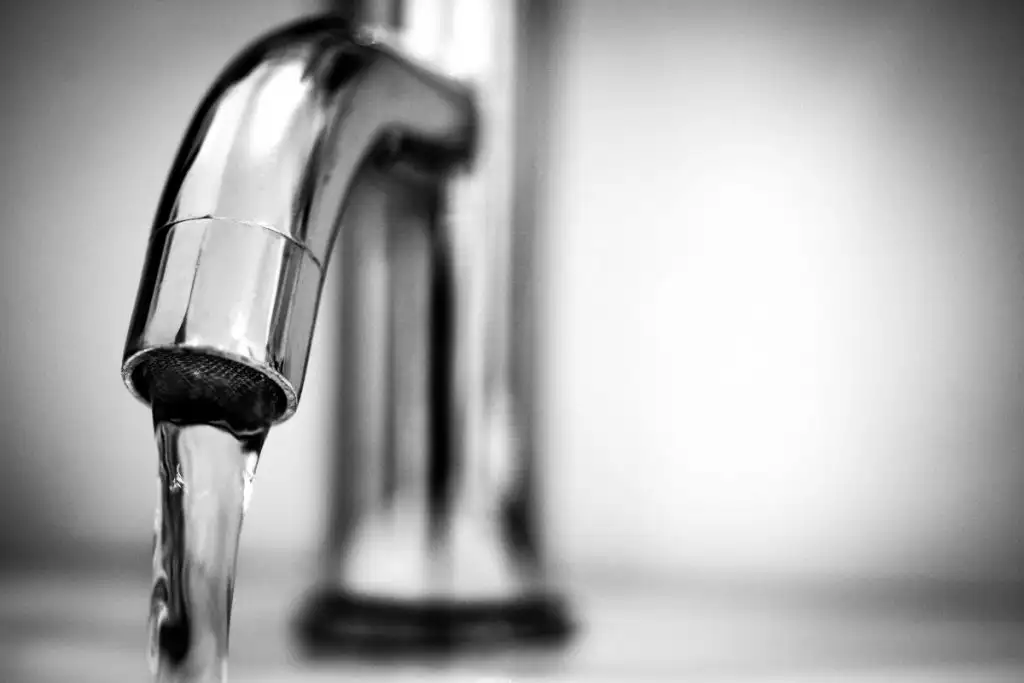
A row of dolphin leaves can hold water for a long time, and as such, they are considered drought tolerant and do not require regular watering.
To avoid this, let the soil dry out completely and then water well. Reduce watering during the fall and winter months when the plant is dormant. This plant likes tap water the most.
Since this pant is a succulent plant, when you overwater it, it will react faster than other regular indoor plants. It will store that water much longer and that can lead to some bigger problems you don’t want.
Temperature And Humidity For String Of Dolphins Plant Indoors
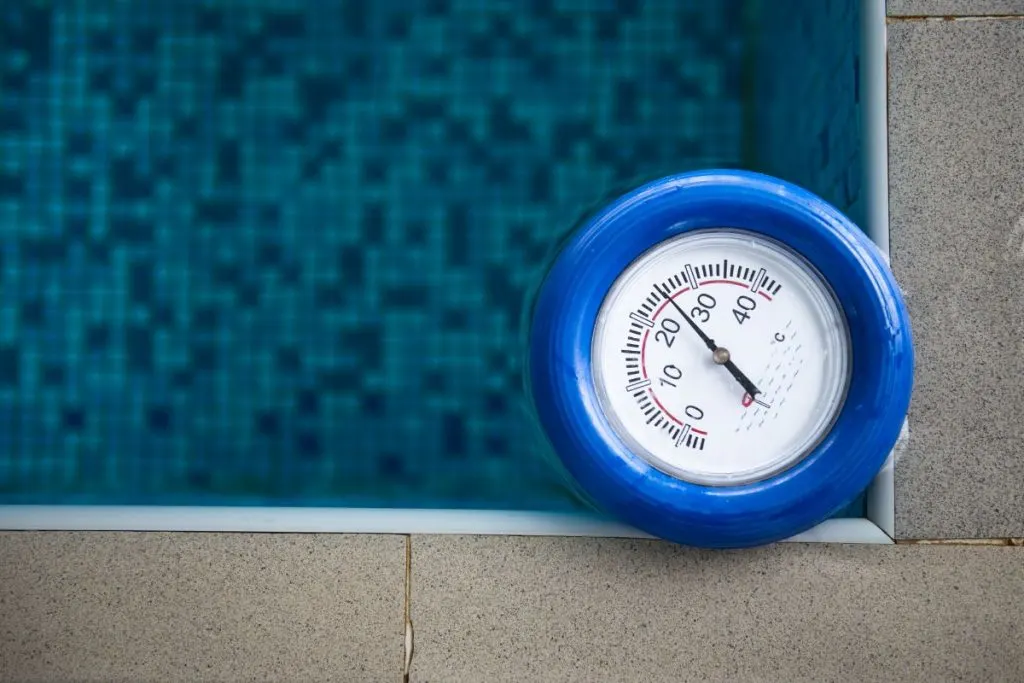
A line of dolphins grows well at average household temperatures and humidity levels when reared indoors.
Humidity should be around 40-59%. That’s not high, not too low, and medium levels of humidity are more than perfect for this plant.
Interestingly, these plants are frost tolerant but prefer cooler temperatures than the average succulent. They tolerate winter temperatures up to 35 F.
If you live in an area with cold winters, you don’t need to be as careful placing the plant near a cold or drafty window as you would with a string of pearl plants.
Fertilizer For A Healthy Stem And A Healthy Leaf
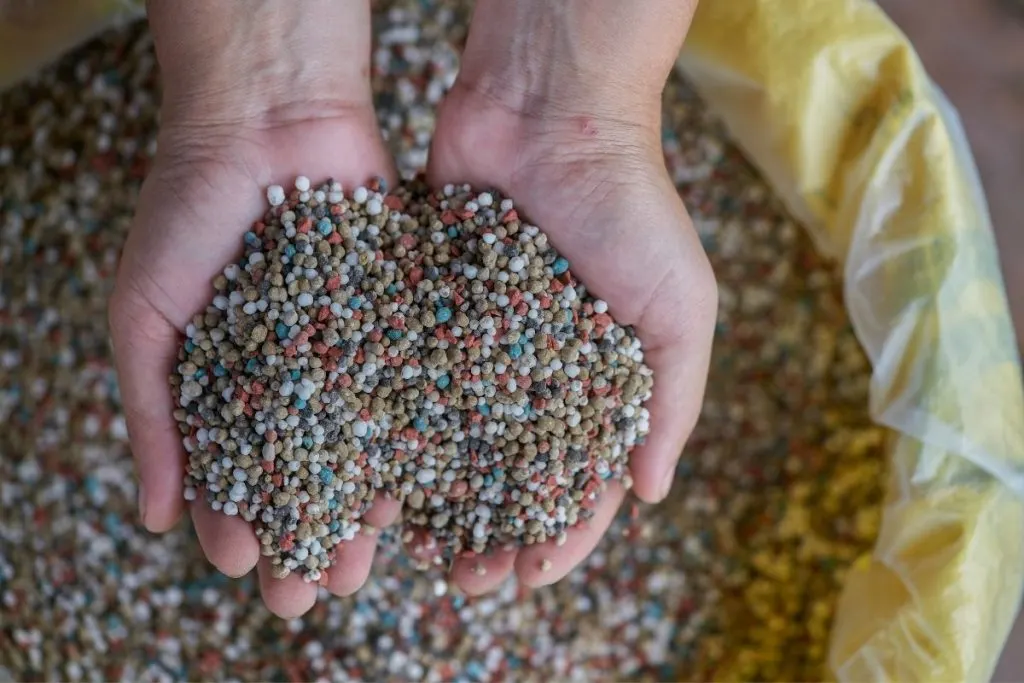
A row of dolphins does not require regular fertilization. Over-fertilizing this plant can cause the leaves to lose their iconic dolphin shape.
However, they can benefit from light feeding in early spring to stimulate growth and encourage flowering.
Using an organic fertilizer such as worm compost, liquid algae, or fish emulsion is usually recommended.
How To Propagate String Of Dolphins – Transplanting At Plant’s Growing Season
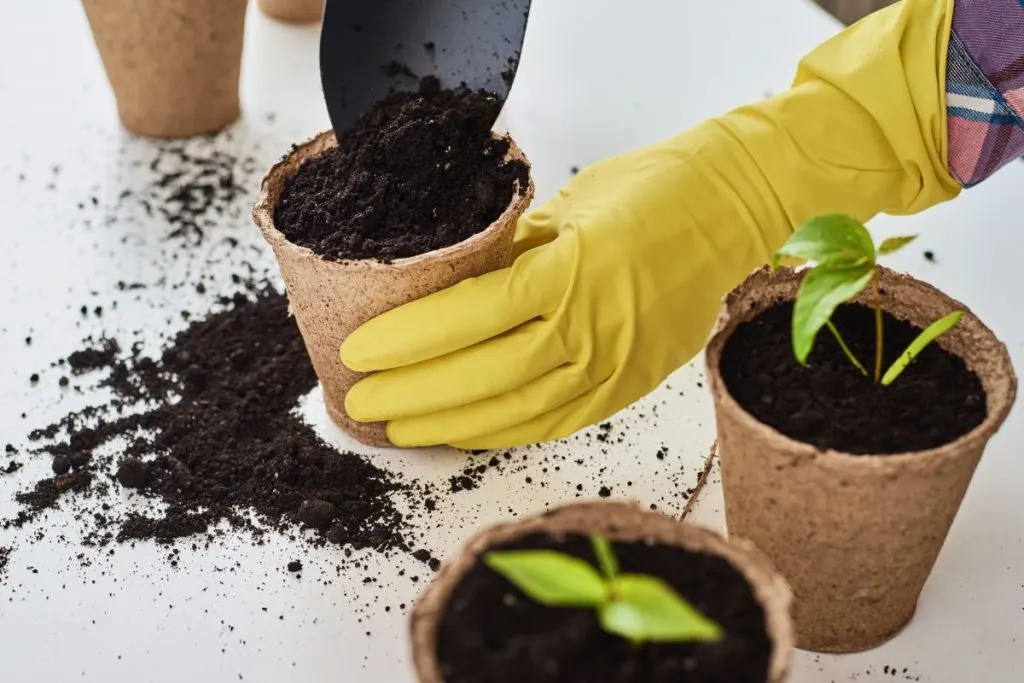
This last succulent can tolerate root binding and does not need to be repotted regularly. One of the best ways to encourage flowering is to keep the plant slightly root-bound.
However, every few years you should transplant a row of dolphins to refresh the potting medium and increase the size of the pot, usually one size larger.
Using a pot with proper drainage holes is important to prevent root rot and waterlogging of the soil.
A row of dolphins can do well in both plastic and terracotta pots, however, some gardeners prefer terracotta as it helps absorb excess moisture in the soil.
How To Propagate String Of Dolphins – Repotting Process Of String Of Dolphins

Carefully remove the dolphin tracks from the old boxes. Lift the pot sideways and gently tap the bottom and sides to prevent too much damage to the roots.
Use your fingers to explore and loosen the roots. If you see very thick roots forming in the dolphin chain, it is recommended to cut off at least one centimeter of the root ball.
Also, cut the tangled roots with a clean, sharp knife so the new roots can fill the soil in the new pot.
Fill the bottom of the new pot with potting mix. It is best to use a thin layer of sand on the bottom of the pot to encourage better drainage and a strong root system.
Place the root ball in the pot, then add more soil around the edges. Make sure the top edge of the pot is above the soil line, as water may leak out during watering. Shake the pot to fill the small space between the roots and the soil.
After the replacement is completed, take care of the dolphin chain until it stabilizes in the stem to avoid problems, and the soil must be dry because too much water can invite pests.
How To Propagate String Of Dolphins – Planting Plants Outdoors

This plant enjoys spending the summer outdoors, so don’t hesitate to move it to the garden or balcony during the summer.
Just remember that the most important thing is to wait for the danger of frost to pass and be sure to bring it back inside when nighttime temperatures drop below 40 F.
When your dolphin succulent is outdoors, place it in a spot that receives gentle morning sun or indirect light.
Avoid direct sun in the middle of the day. You will need to water the succulents more often than indoors because wind and sun often dry out the soil faster.
Flowering Dolphin Succulent -How To Propagate String Of Dolphins
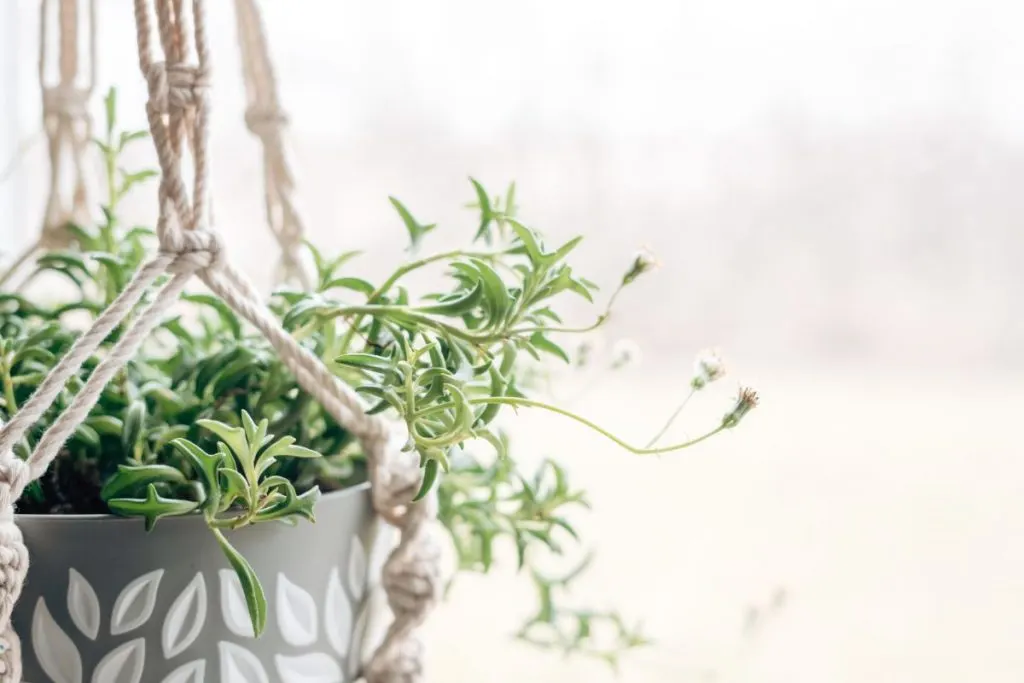
If you are lucky, your plant will bloom from time to time. Like other members of the Asteraceae family to which this plant belongs, its flowers are in the form of small daisies.
They are white to cream in color and smell a bit like cinnamon. Once the flowers fade, they turn into fluffy seed heads that mimic a dandelion puff.
When they finally bloom you’ll see an amazing white flower. But of course, they have such interesting foliage without their flowers so most people buy them for the leaves, not because of their flowers.
Common Pests And Diseases Of String Of Dolphins

Common houseplant pests such as aphids, mealybugs, scale, and spider mites can pose a problem for several dolphins. These pests are sap-suckers, and if left untreated, they can damage a healthy plant.
With early detection and proper treatment, these common houseplant pests can easily be brought under control.
When grown indoors, plants can suffer from mites or mold. Use a cotton swab dipped in alcohol to remove mealworms. For mites, remove and spray with cold water.
If the above procedure does not solve the problem, you can use a spider mite insecticide and tapeworm insecticidal soap to finish the job.
These plants are not prone to any special diseases, apart from root rot which is caused by excessive watering. If you only water when the soil is completely dry, plant it in a pot with proper drainage holes, and use a well-drained potting mix, you shouldn’t have any problems.
Other Problems With Dolphins Plants
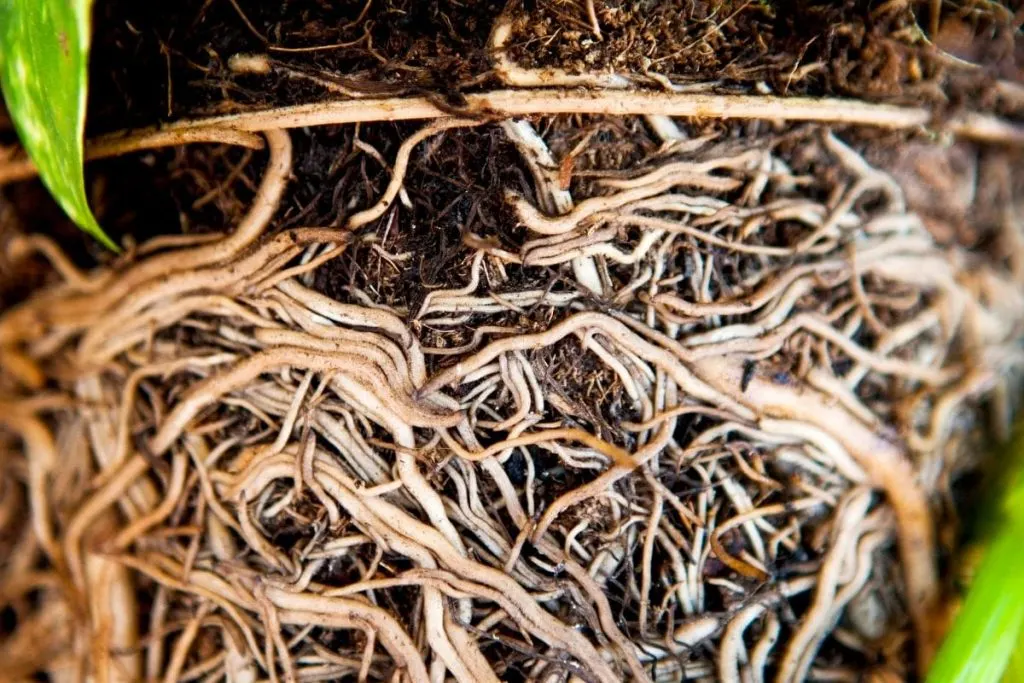
Compared to other Senecios, such as pearl strings, dolphin strings contain less water, so usually too little water.
So remember to regularly check the leaves for mites to see if there is water. Always check the signs to determine if pods of dolphins are above or below the water.
Root Rot On String Of Dolphins
- Root rot occurs when the roots of your string of dolphins plant succumb to decay pathogens. The disease turns the affected roots into brown or black pulp that cannot transport nutrients to the rest of the plant. His progress is fatal.
Root rot can quickly spread to the rest of the plant. The disease can be caused by many different viruses, bacteria, fungi, and oomycetes (water molds). A few common villains are Fusarium, Pythium, Phytophthora, and Rhizoctonia—but that doesn’t matter as far as basic treatment goes.
Living in containers makes the plant particularly vulnerable, but these pathogens don’t harvest houseplants: they cause enormous economic damage to crops worldwide.
The artificial environment of the tank can encourage infection, so you must be careful that your green babies are not sitting ducks.
Slow growth is one of the general indicators that the roots may be struggling. Yellowing leaves are another early warning.
Check the soil if you see discoloration of the leaves. Soil that remains wet can also indicate a problem down below. Leaves that curl during the day but seem to recover overnight are another warning sign.
- Late-stage infection turns the roots to mush. If not stopped, the whole plant will eventually topple over. In advanced cases, when you check the stem, it may fall off in your hand.
Why Is My Dolphin Plant Turning Brown?
Yellowing dolphin leaves can be caused by too much or too much water. If this happens, make sure the soil is dry and adjust your irrigation technique to prevent further damage.
Brown leaves will eventually turn yellow, and the yellow phase is not a phase we want to see. Make sure you follow the watering routine of this plant to avoid this.
Why Does My Dolphin Plant Have Flat Leaves?
The small dolphin-shaped leaves can deform or flatten in too much water. Allow the soil to dry before watering again.
After a few days, the dolphin leaves will regain their curved shape and look like miniature dolphins jumping out of the water.
Why Do Dolphins Plant Turn Purple?
Succulents that have turned purple or discolored may be natural or stress-related. If stress causes your succulents to turn purple or red, it may be due to sudden temperature changes, excessive heat or light, or a lack of food or water. Succulents are purple or red because of pigments called anthocyanins and carotenoids.
Why Is My Dolphin Plant Dying?
Overwatering and underwatering are the most common causes of dolphin drowning. So if your plants seem to be getting a lot of water, you should wait until the soil dries out before watering. However, if the growing medium is dry and the leaves of the plants are drooping, you will need to water them well to revive the soil.
FAQ – How To Propagate String Of Dolphins

I know you still have many questions about these unique plants. Without further thought, let’s get into them so we make sure we answered all of your questions about this lovely plant.
How Can I Tell That My String Of Dolphins Is A Healthy Plant?
Once you notice that your string of dolphins plant is growing normally, its leaves are normal color, they don’t have any discoloration, you can conclude that you’re growing a healthy plant in your home. Of course, that means you’re doing a great job so good for you! Keep going like that!
Why Is My String Of Dolphins So Small?
The small dolphin-shaped leaves can deform or flatten in too much water. Allow the soil to dry before watering again.
Sometimes when you think that much water is supposed to make your plant grow, it might do the opposite thing.
Are Dolphin Succulents Easy to Grow?
Dolphin plants have a reputation for being a bit prettier than other succulents. But they are fun and wonderful plants that will enhance your collection, says Baldwin. Don’t worry if your baby’s plant doesn’t look like much when you first bring it home.
The older leaves at the top of the plant are the ones that look like dolphins, while the new leaves at ground level still won’t have that final shape.
Is String Of Dolphins A Drought Tolerant Plant?
As you know already, the string of dolphins is a succulent plant which means that it holds water in its leaves and stem for a long time. Due to that, it means that this plant is a drought tolerant plant.
But it is not tolerant as hot dog cactus for example, or similar plants. You should still water it after 12 days maximum.
Is It Better To Propagate Dolphins Succulents In Soil Or Water?
There is no right answer to this question. Some people prefer the propagation process in soil, some with water.
This is an individual thing. If you think it’s easier for you to propagate your dolphins succulents in water, do it like that.
As long as you do it right and you follow the right steps, it will give you the same result, a perfect new plant!
Is String Of Dolphins Toxic Plant?
This succulent plant isn’t toxic to human beings, but in case you have paw buddies in your house or apartment, be careful!
This plant is toxic to cats and dogs and should be placed somewhere they can’t reach for it.
Are Dolphin Strings Rare?
Wrapping It Up On How To Propagate String Of Dolphins
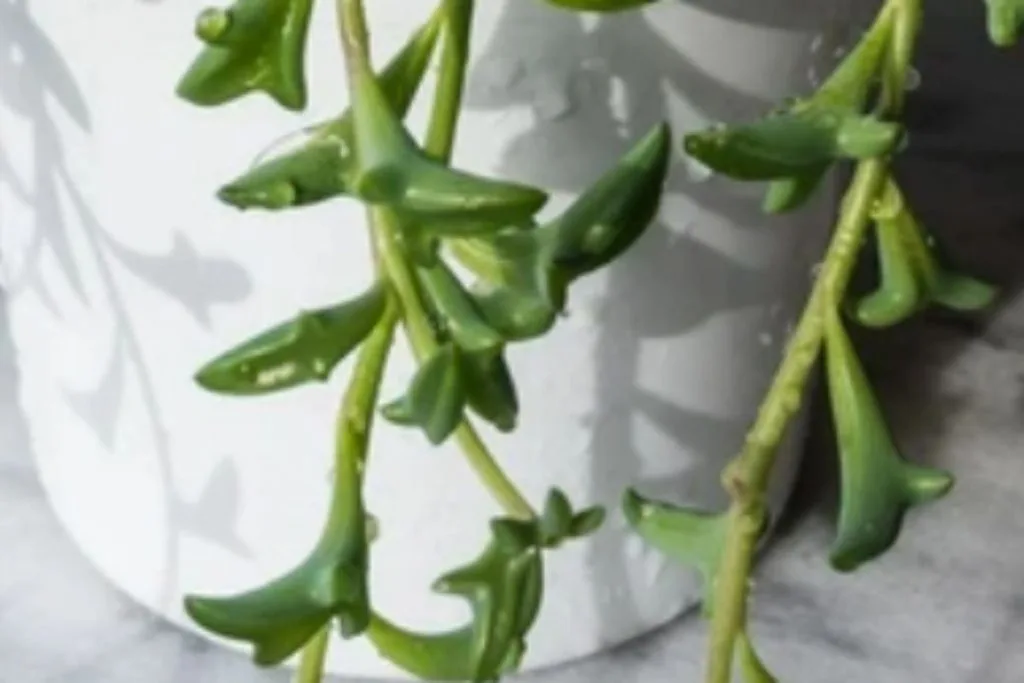
We have come to the end of another article about plants. Today we learned how to propagate a string of dolphins and much more about these succulent plants.
I hope you enjoyed the article and that with the FAQ section we completed your knowledge and answered all possible questions you had.
Now everything is clear. Propagate these plants in water, using leaf cuttings or stem cutting, it’s up to you. Now you know how to do it properly, and in seven to 10 days you will have signs of new plants.
When we talk about caring for this plant, I think everything is quite clear. It doesn’t need too much water, the soil requirements are not complicated, and you can make the soil mix yourself, and add fertilizer as needed and as the plant grows.

